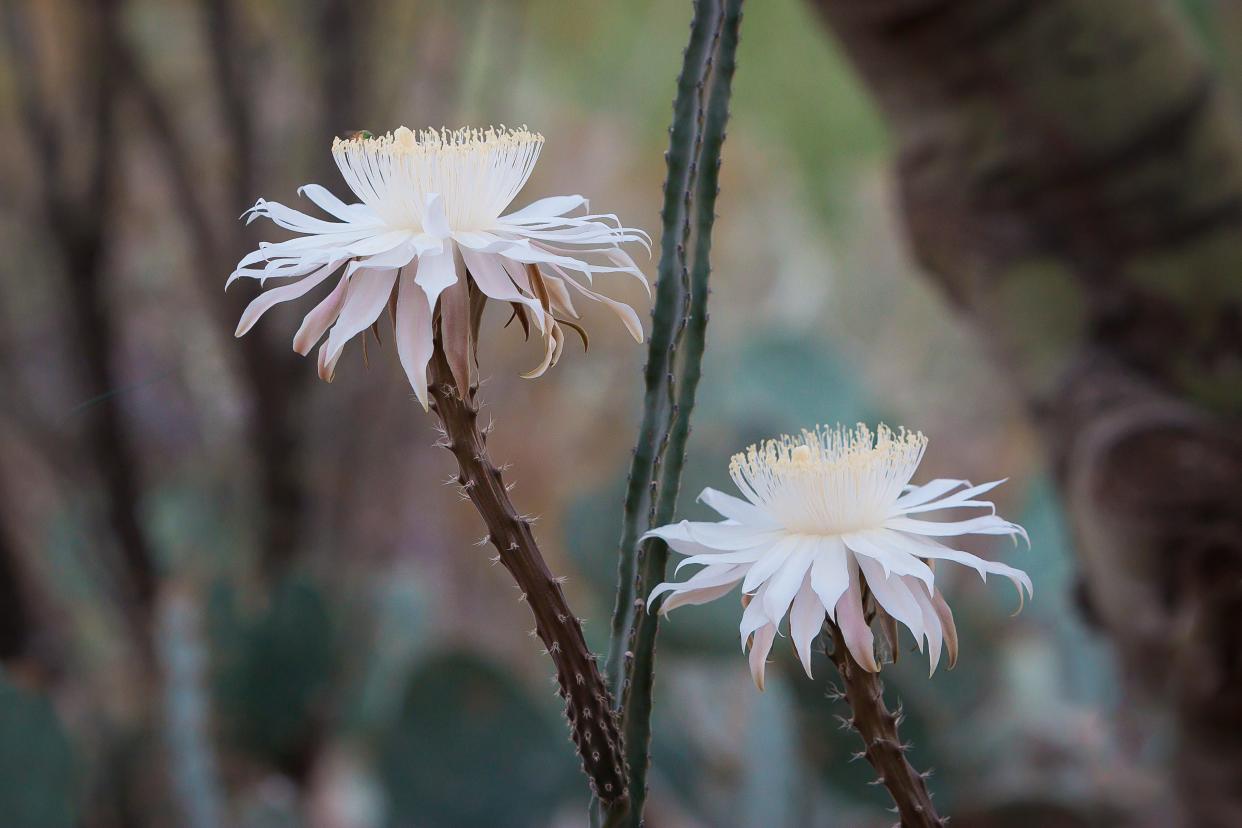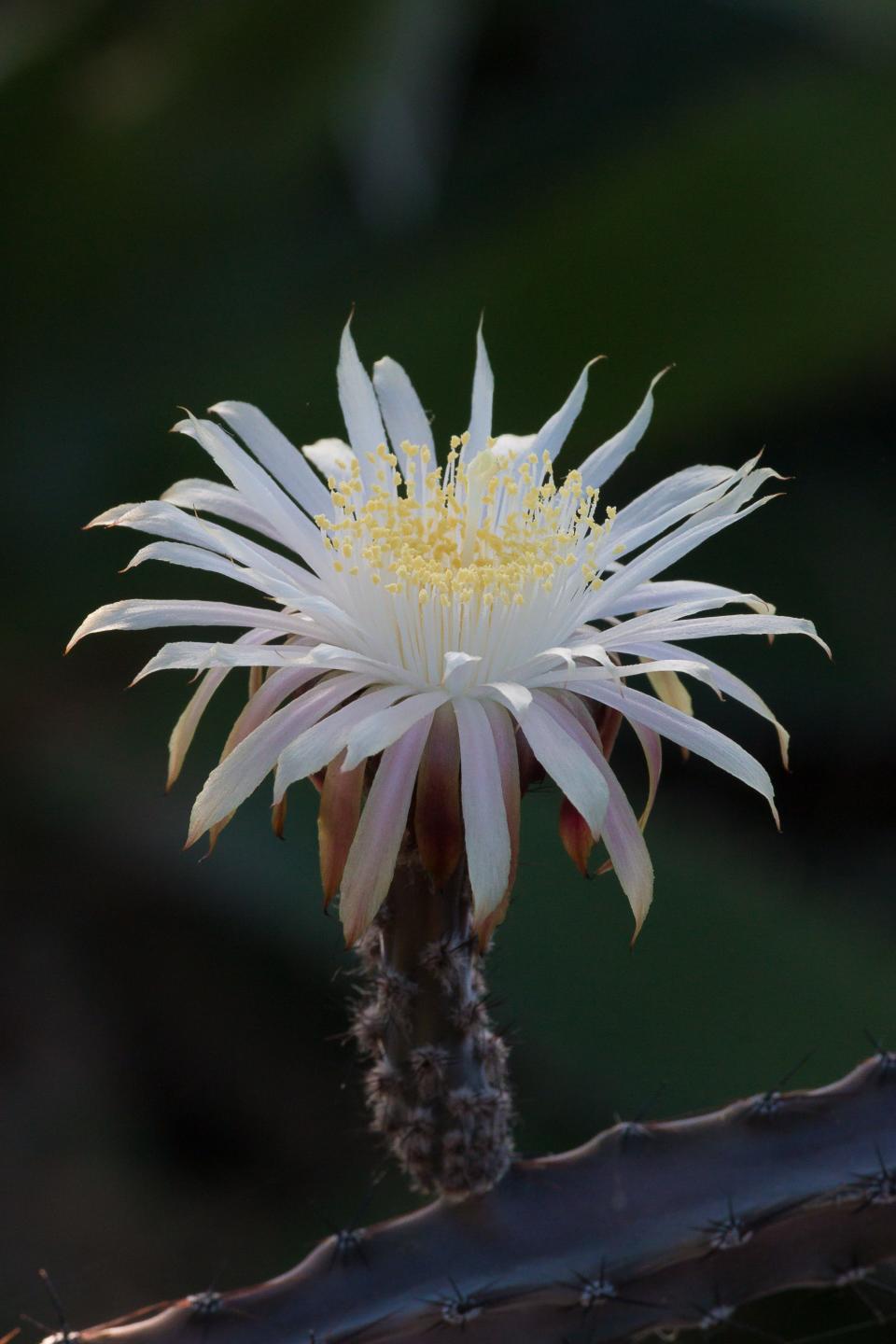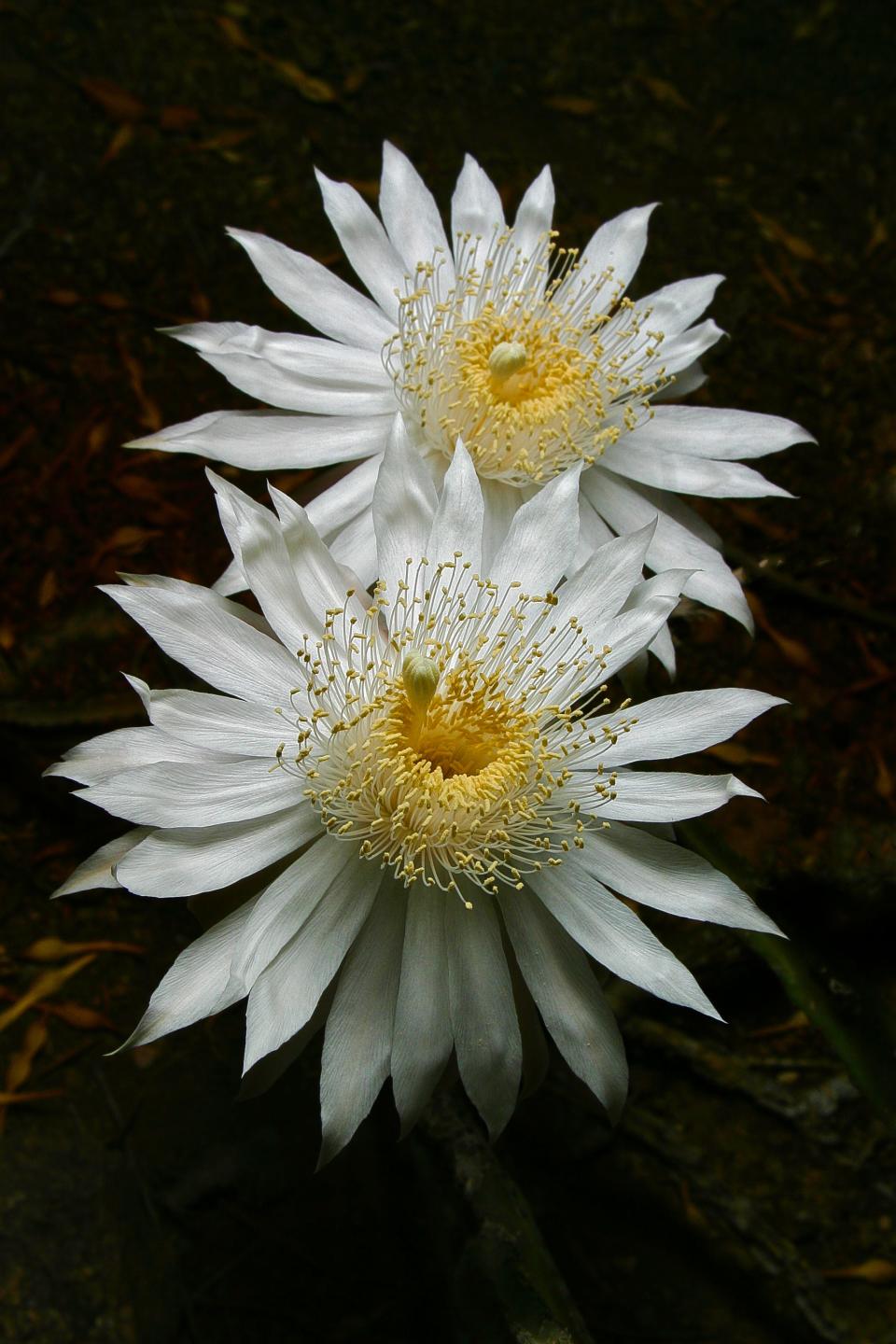There's a cactus that blooms for a single night every summer. Here's when and how to see

There is an unusual cactus native to the Sonoran desert that for most of the year looks like a dead stick with a jumble of gray and purplish stems. But once every summer after the sun has set, it shows its large, white, sweet-scented blooms for only a few hours.
"It's so uncactus-like in its appearance. Most people would not think it very attractive, it's not symmetrical like some other cacti are," said Matt Johnson, manager and curator of the Desert Legume Program at the University of Arizona "But then it has this espectacular flower, which is certainly the largest and showiest flower of any cactus native to Arizona."
Here's what to know about Queen of the Night, the Arizona-native flower that blooms for only one night each summer.
When does the Queen of the Night bloom?

This cactus, scientifically known as peniocereus greggii, can start to bloom from May to late July. Brian Rasmussen, curator at the University of Arizona campus arboretum, said a few individual flowers might bloom at different times during the summer months, but there's a single night in which the vast majority of them bloom in mass.
"All the plants in the area will bloom in the same night all together, and then the flowers close up in the morning," Rasmussen said. "Say the plant has 10 buds on it, probably 8 of them would bloom on that night. It's very captivating, it's an amazing plant."
The flowers usually begin to bloom after sunset around 8 p.m., reach full opening by midnight, and close by 9 a.m. the next morning. Each flower can be from 4 to 6 inches in diameter.
Johnson said no one knows exactly why this synchronized phenomenon happens, and it's extremely hard to predict when that bloom night will occur each year.
"I really have not heard and explanation for sure of why they are able to do that, but it does seem most of the flowers on a given area will grow on a certain night, so you have to catch it," Johnson said.

Rasmussen said there might be an environmental factor that could be related to rainfall, but the exact trigger behind the synchronized bloom is a mystery.
"It's very hard to tell when it will happen," Rsmussen said. "You just have to watch the buds as they grow bigger, that's really the only way you could tell. But you don't know when a blooming sequence happens until it they start opening up."
Why does it bloom for a single night?
Just like a queen, this flower is beautifully tactical.
According to Raul Puente with Desert Botanical Garden, the Queen of the Night is pollinated by a moth, which is active at night. To attract the moth, the flower uses a few strategies.
When the flower is blooming, it releases a sweet scent that, according to Puentes, is perceivable to humans, which means the fragrance is quite strong for the much more scent-sensitive moths to smell from afar.
By blooming en mass, the plant increases its chances of being pollinated since it has more buds open at once and by producing an even more intense fragrance all together.
The queen also chooses a white gown for the blooming event so she can reflect moonlight off her petals and make it easier for pollinators to find her.
The flower closes up shortly after the first sun rays hit in the morning. Puente said this could be because, being such a large flower, the plant uses quite a bit of energy for the opening and can loose a lot of water when it blooms. By blooming at night, the plant also avoids water evaporation during sunlight hours.
Rasmussen added that by closing up, the flower also protects its ovary, and if it was pollinated, it will produce a large, red fruit.
Where can I find it?
According to Puente, this plant is pretty much scattered across the desert and is very hard to find because it typically grows under nurse trees and tends to camouflage as a bunch of wispy, dry sticks amid shrub branches.
You can find them especially around washes, but your best bet is look out for the blooming event, Puente said.
"It's very hard to spot them in the wild," Rasmussen said. "The one night of the year when most of all the flowers in an area open up is typically the only way you can see it."
Tohono Chul botanical garden, located at 7366 N Paseo Del Norte in Tucson, has the world's largest collection of the Queen of the Night and hosts an event every summer so people can see their mass blooming.
Because it is hard to predict, sometimes the announcement is given roughly 12 hours in advance. To be notified, you can sign up to the Garden's Bloom Watch newsletter.
Rasmussen said people can also find them at the university's arburetum at the Krutch Garden, next to Old Main and at the Desert Plant Conservatory on top of the 6th Street garage.
The Desert Botanical Garden also has a collection planted in ports near the trails so people can see them easily when they start blooming. Two of them were expected to bloom later this week, Puente said.
Reach breaking news reporter Laura Daniella Sepulveda at laura.sepulveda@gannett.com or on Twitter @lauradaniella_s.
This article originally appeared on Arizona Republic: Queen of the Night: What to know about this unusual Arizona cactus

